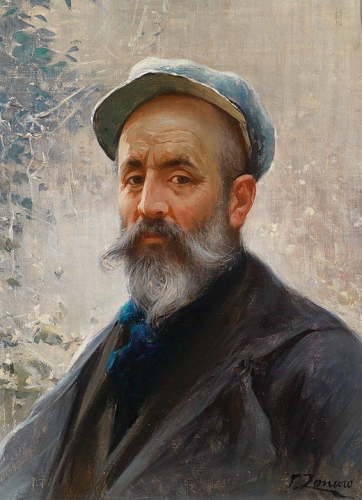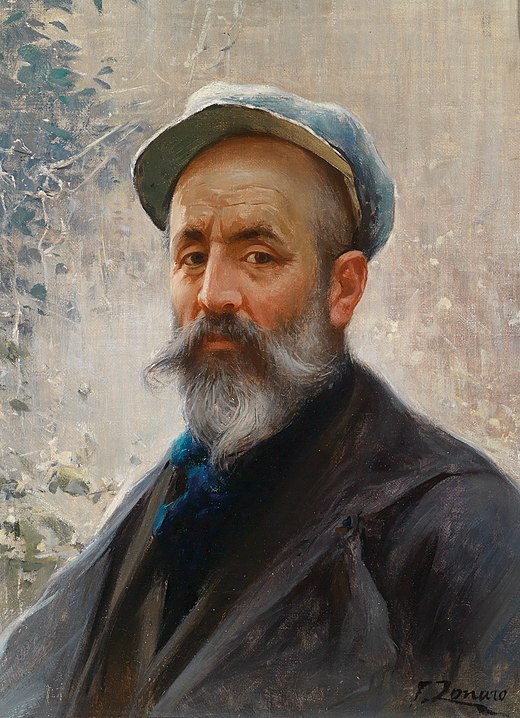Fausto Zonaro
( 1854-1929 )
Biography


Born on September 18, 1854 in Masi, in the province of Padua, is an emblematic figure of European painting in the late 19th and early 20th centuries. Through a journey marked by a quest for light and culture, he fused Italian pictorial traditions with Eastern influences, becoming one of the most renowned artists of his time, particularly in the Ottoman Empire.
Born into a modest family, Zonaro showed an early talent for drawing. He began his artistic training at the Technical Institute of Lendinara, before joining the Cignaroli Academy in Verona, where he benefited from the support of patrons such as Stefania Omboni. There, he rubbed shoulders with major figures in Italian painting such as Giacomo Favretto and Angelo Dall'Oca Bianca.
After completing his studies, he moved to Venice, where he opened a painting school and painted scenes of everyday Venetian life. The Serenissima provided an inspiring backdrop, but it was in Naples that he found a more vibrant source of inspiration. He immersed himself in the light and colors of the South, as well as in local folk scenes, as evidenced by his emblematic painting Il banditore (1886). However, despite his talent, he struggled to find economic stability in Italy.
In 1888, Zonaro moved briefly to Paris, where he immersed himself in Impressionist trends. This experience marked a decisive turning point in his career, enabling him to perfect a technique combining Venetian colourism, Neapolitan realism and Impressionist innovations. He developed an aesthetic in which light and atmosphere took centre stage, laying the foundations of his mature style.
Fascinated by the book Costantinopoli by Edmondo De Amicis, Zonaro left Paris in 1891 to settle in Istanbul with his wife Elisa Pante, also an artist and photographer. Thanks to Elisa's contacts, he quickly became integrated into the artistic and diplomatic circles of the Ottoman capital.
In 1896, Zonaro was appointed official court painter to Sultan Abdülhamid II, after impressing the latter with his painting depicting the Imperial Regiment of Ertuğrul. This prestigious title opened the door to imperial commissions, including portraits of the royal family, historical scenes and palace decorations. Among his most famous works from this period is a monumental cycle on Mehmed II's conquest of Constantinople.
His studio, located in the Russian embassy, became a centre of art in Istanbul, attracting artists, diplomats and aristocrats. In his paintings, Zonaro captured the life and landscapes of the Ottoman Empire with a unique sensitivity, blending Eastern exoticism with European academic rigour.
The fall of Abdülhamid II in 1909 marked the end of his official role at court. Zonaro returned to Italy, where he continued to paint, but without the same recognition as in Istanbul. He died in 1929, leaving behind a rich and varied body of work, reflecting a constant dialogue between East and West.
Fausto Zonaro remains a key figure in the history of art, illustrating through his work the cultural interconnection of his era. His works, exhibited in private and public collections around the world, perpetuate the memory of an artist who was deeply rooted in his time, but whose vision transcended geographical and stylistic boundaries.
No artwork matches
93400 Saint-Ouen sur Seine